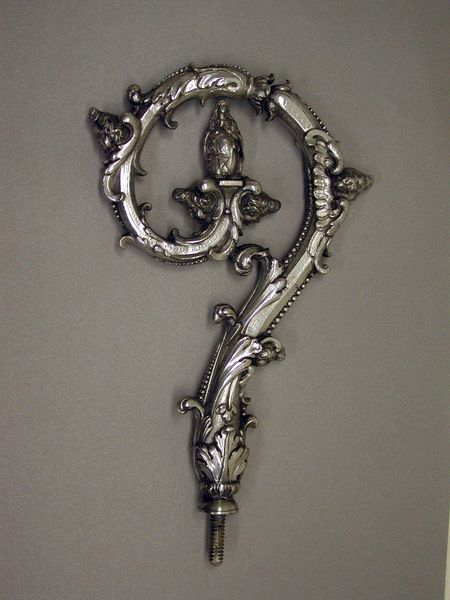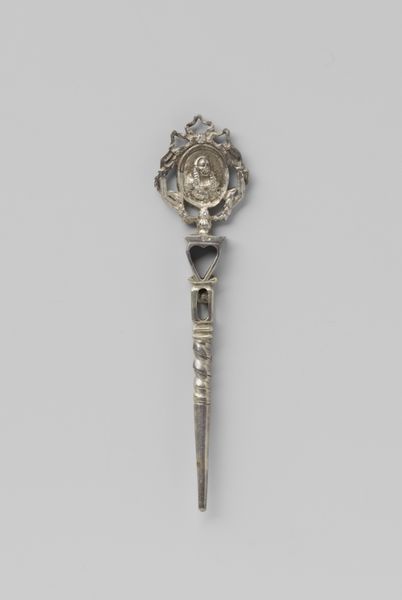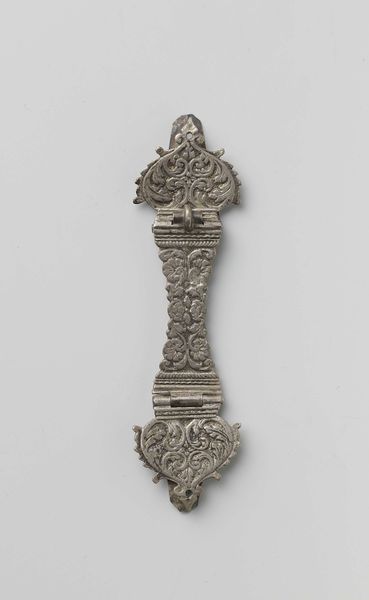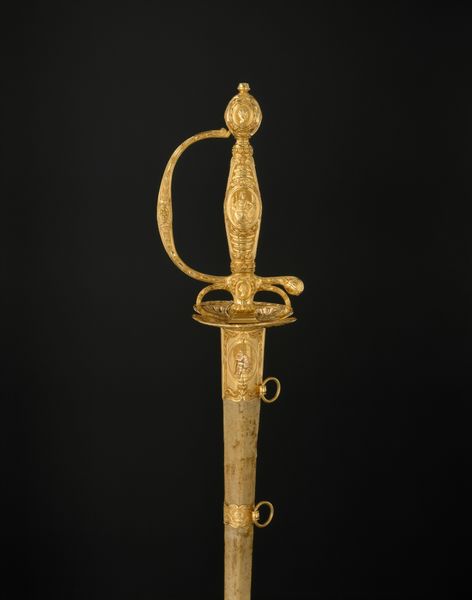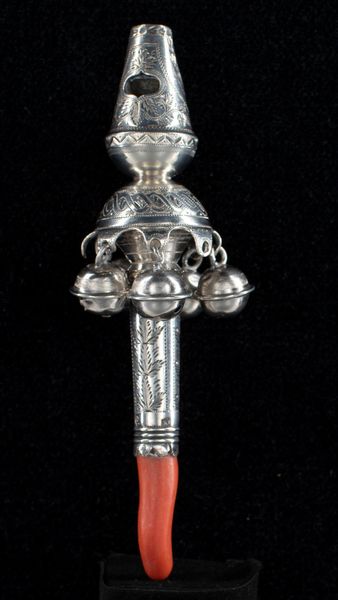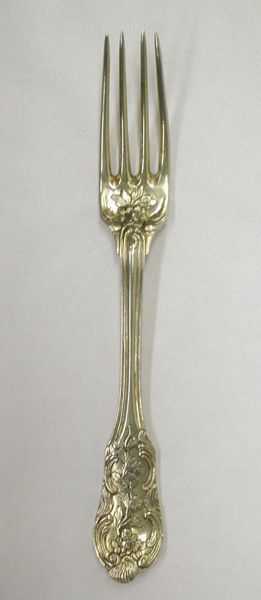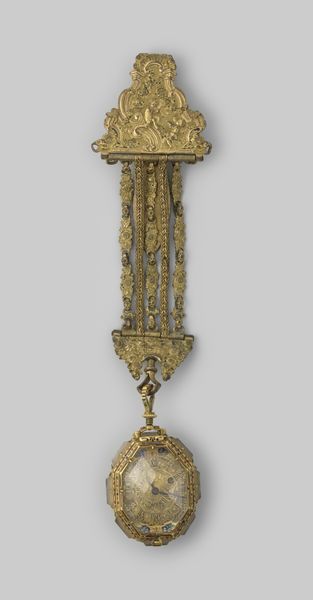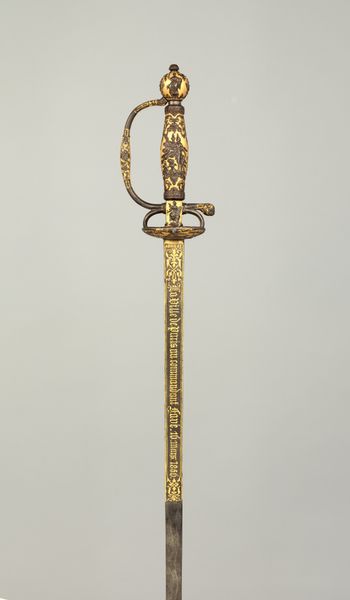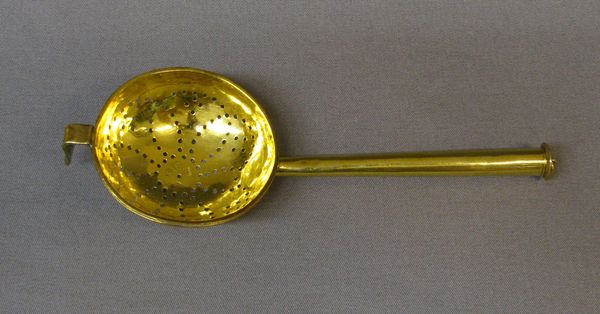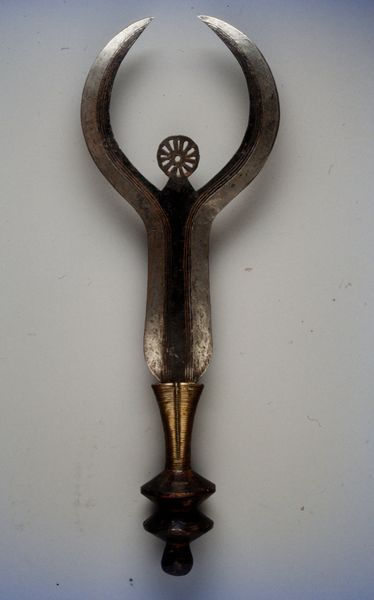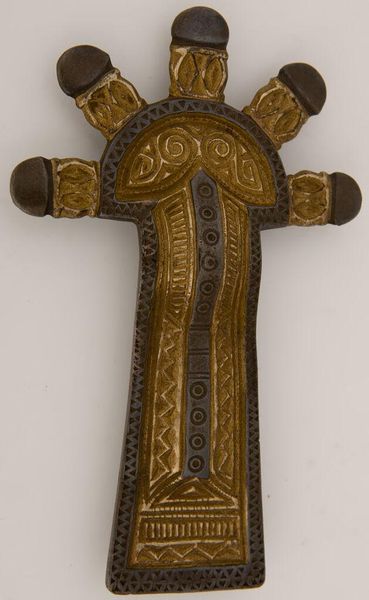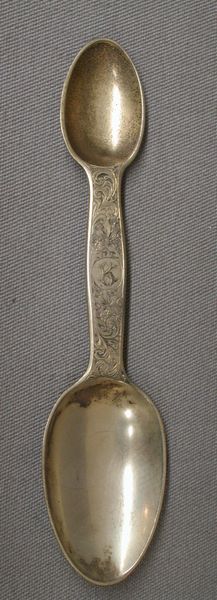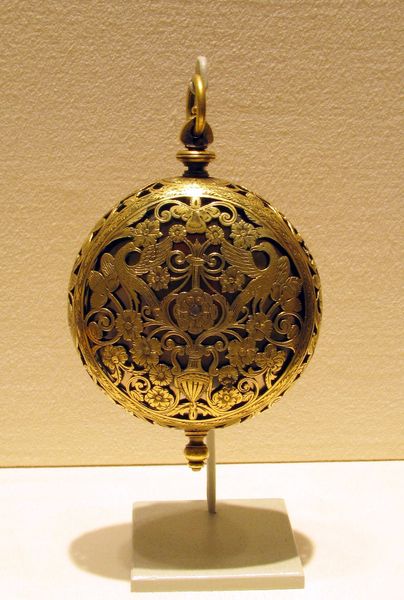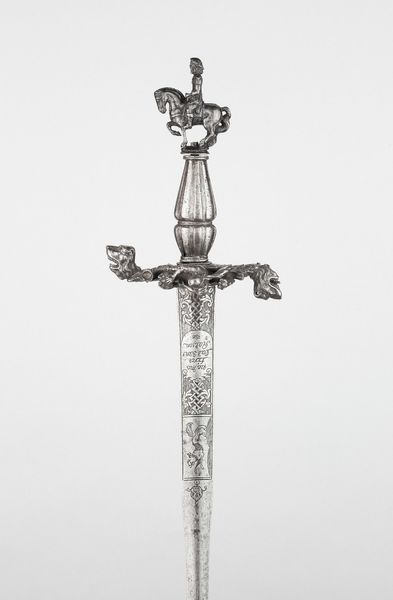
metal, gold, sculpture
#
metal
#
gold
#
sculpture
#
decorative-art
Dimensions: L. 10 in. (25.4 cm.)
Copyright: Public Domain
Editor: Here we have the Coronation Spoon, made of gold in 1902-1903. The work, currently housed at the Metropolitan Museum of Art, is pure ornamentation. It strikes me as remarkably detailed—the patterns and shapes seem almost overwhelming, even on such a small object. What do you see in this piece? Curator: Immediately, the intricate detailing across the spoon invites closer scrutiny. Let us consider the vertical axis: observe how the ornate handle, punctuated with circular motifs, culminates in the spoon's bowl, bisected by a decorative element. Note the contrasting textures. The handle has dense, repetitive patterns, against the bowl’s smoother, engraved surface with serpentine figures and stylized botanical elements. How do these choices contribute to the overall aesthetic? Editor: Well, the contrast does create a sense of hierarchy. The handle feels more structured, grounded even, while the bowl almost floats, it feels lighter with the more open design. Is that something you think the artist consciously intended? Curator: I would argue definitively yes. The division between base and function is clearly denoted in the break in materiality, which could symbolize transition, or perhaps even a link between utility and the abstract principles of form, what do you think? Editor: I appreciate your eye for these intrinsic details! It really shifts my focus from mere observation to active engagement with the artist's choices and their implications. Curator: Precisely. The spoon's formal qualities—its texture, composition, and detail—communicate a richness of meaning beyond its function as a tool. A valuable reminder to analyze objects not just for what they represent, but how they embody art.
Comments
No comments
Be the first to comment and join the conversation on the ultimate creative platform.
